Let's talk Canvas!
We at Chromaco are thrilled to share information to Hawaii’s the fine art community about our canvas giclée prints! These premium quality reproductions are the perfect blend of traditional artistry and modern printing technology, offering you the artist an exceptional way to showcase your masterpieces. Crafted with meticulous attention to detail, our giclée prints capture every hue and brushstroke of the original work, ensuring a faithful representation that's true to your vision. We use high-grade canvas and archival inks which guarantee longevity and vibrancy, making these prints a splendid addition to any art collection. We're genuinely excited about how canvas prints mirror the original painting's texture and depth, providing an authentic art experience that's both visually stunning and accessible.
For fine art painters, our canvas giclée prints are a game-changer in expanding their sales programs and reaching a broader audience. Not only do these prints allow you the artist to offer your works at various price points (accommodating art lovers with different budgets), but they also enable the reproduction of sold- or exclusive original pieces, ensuring your art remains available and appreciated by all. This increased accessibility opens up new revenue streams and enhances your market presence without compromising the integrity or value of your original artwork. We at Chromaco are passionate about supporting artists in your journey, and these giclée prints represent part of our commitment to helping you succeed and share your talent with the world.
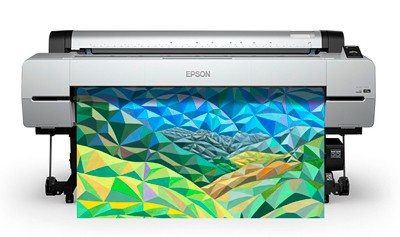
What is a giclée?
First let’s quickly clear up a popular misconception about a giclée (pronounced “zhee-clay” )… a giclée is not strictly a “canvas print” as many people think. According to Wikipedia, giclée's are simply fine art prints made using inkjet printers. These prints can be on various substrates such as canvas and watercolor paper, with different types of inks, and are more properly called “giclée on canvas” or “giclée on fine art watercolor paper”.
The word giclée is French, and was adopted to differentiate art prints from other types of ‘commercial prints’, as well as to improve the product name for marketing purposes (over a less appealing “digital print”).
Why sell canvas giclée prints?
Canvas adds a dimension of texture that paper simply cannot match. Each print features the fine, woven lines of canvas, lending an authentic touch that resonates with the depth of your original painting.
- Color That Captivates: The giclée process employs advanced color matching technologies and archival-grade inks to produce a spectrum of colors that are rich, luminous, and faithful to your original masterpiece.
- Durability That Lasts: Each canvas print is not just a visual treat but built to last. The UV-resistant inks protect your art from fading, ensuring that the colors remain as vivid as the day they were printed, for decades to come.
- Versatility That Sells: From sleek, modern gallery wraps to traditional framed pieces, canvas prints offer a range of presentation options to match any collector's taste. This flexibility means you can cater to a wider audience, increasing your market reach.
- An Experience That Sells: Canvas giclée prints evoke the feel of original art, making them a more desirable option for collectors who seek the aura of authenticity without the price tag of an original.
The most profitable approach for an artist selling canvas giclée prints is to harness the power of limited editions. By offering your artwork as a limited series, you not only create an air of exclusivity around your pieces, but also add to their collectability, driving up demand and value. This strategy, combined with direct sales through personal websites or social media platforms, significantly cuts down on middleman fees, maximizing profit margins.
We at Chromaco are genuinely excited about the big potential of canvas print sales to boost an artist's revenue while allowing your customer base to own a piece of their favorite art without the price tag of an original. Leveraging digital marketing and storytelling about the creation process can further engage potential buyers, making the art more relatable and desirable (call us for ideas!). This method not only enhances the artist's profitability but also strengthens their connection with their audience, making it a win-win scenario.
How are canvas giclée prints made?
At Chromaco, we specialize in producing canvas giclée prints of exceptional quality, tailored specifically for fine artists who demand precision, durability, and color fidelity in their reproductions. Made in Hawaii, our giclée prints embody the rich artistic heritage and vibrant color palette of the islands, offering artists a unique medium through which to share their work.
- Our process begins with the acquisition of a high-resolution digital file, which undergoes a meticulous proofing procedure conducted by our team of skilled technicians. This procedure ensures that every detail, from the subtlest gradation to the most vibrant hue, is accurately reproduced.
- The state-of-the-art Epson fine art printers at Chromaco are equipped with archival-quality "pigmented" inks, capable of producing a wide spectrum of colors and deep blacks, ensuring the print will not only look vibrant but also stand the test of time with world-class longevity. Individual dots from the printer are as small as 3.5 picolitres... for reference, a raindrop of water can contain 1,000's of picolitres! Our printers spray millions of these archival ink droplets onto the canvas in an extremely precise, layered manner, capturing the nuances of the original artwork.
- We understand the importance of fidelity to the original artwork, and our state-of-the-art color management system is calibrated to guarantee that each print faithfully reflects the artist's vision. We create our own in-house ICC color profiles for each media that we offer, guaranteeing the largest and best color gamut's for each media. We utilize only the finest archival-grade canvas and inks, and our printing technology delivers superior clarity and longevity which ensures that each piece withstands the test of time.
- A liquid coating is then sprayed onto the prints, this layer acts as a barrier against UV rays, which can cause colors to fade over time, ensuring the artwork retains its vibrancy and color accuracy for many years. Additionally, the coating helps safeguard the canvas from dust, moisture, and environmental pollutants (eg ozone), which could otherwise damage or deteriorate the print's surface. It also makes the canvas more durable, resisting scratches and scuffs that could mar the artwork's appearance. Lastly, the coating often provides a finish that can enhance the visual appeal of the print, offering choices between matte or glossy finishes.
- The cotton canvas is (optionally) carefully stretched over US-made wood stretcher bars, prepared to the exact client specifications. Stretcher bars are available in standard 0.75" depths, or a heavy duty 1.5" depth.
Chromaco's canvas giclée prints stand as a testament to our commitment to quality, craftsmanship, and the support of fine artists in their pursuit of excellence and global recognition.
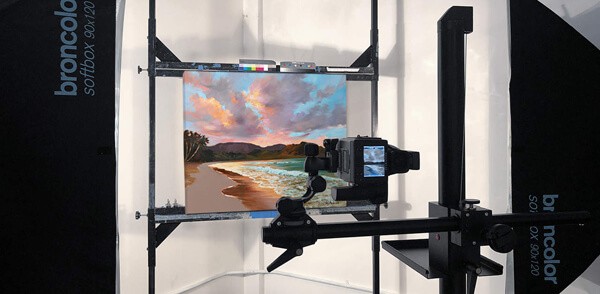
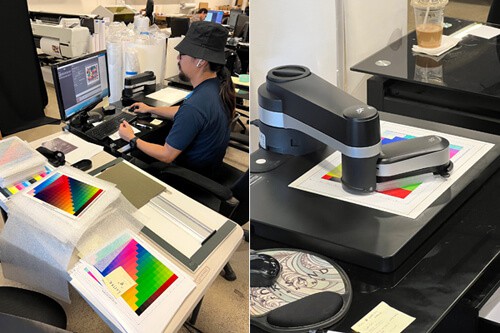
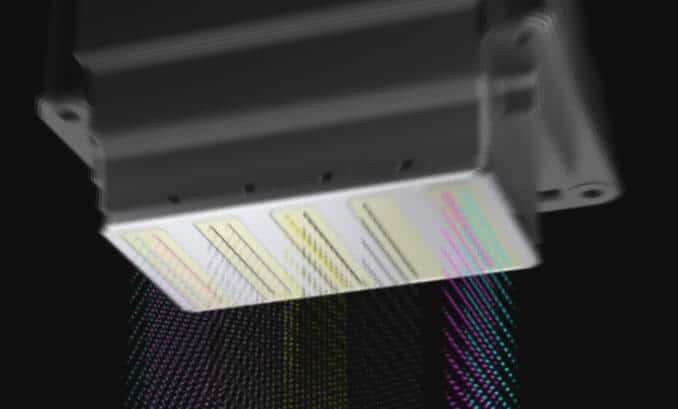
What about wrapping and stretching?
When it comes to showcasing your canvas giclée print, the way it's wrapped can significantly impact its overall presentation and allure. There are several wrapping methods we at Chromaco can offer you, each offering a unique aesthetic to suit different tastes and décor styles.
- A gallery (face) wrap is the least popular choice in our opinion, where the image is "stretched" around the sides of the stretcher frame, creating a seamless look without requiring a frame (but this method causes loss of some of the image to the sides);
- For a more traditional vibe, a museum wrap involves us printing a solid color (often white or black, but other colors possible) on the sides, allowing the full image to be displayed on the front with no loss of detail. This is especially ideal for prints that will be float framed where some side coloring is desired;
- Then there's the most popular mirror wrap, where the edge details of the image are mirrored on the sides of the canvas, ensuring no part of the artwork face is lost to the wrap (and the sides have color and detail continuity).
Each wrap method adds a distinctive touch to the artwork, enhancing its visual appeal and complementing its surroundings. Or, skip the wrap and go with a standard "face print" with white border, common for contemporary framed prints!
When it comes to stretching the canvas giclée print on wood stretcher bars, there are also options to consider that can affect the durability and appearance of your artwork. Stretcher bars come in varying thicknesses, allowing for a choice between a more subtle, classic look or a bold, modern gallery-style protrusion from the wall. Artists and collectors can opt for our standard 0.75" stretcher bars for a lightweight, economical choice, or upgrade to our 1.5" heavy-duty bars for larger pieces that require additional support. Our canvas is professionally stretched in-house and secured with staples to ensure it remains taut and wrinkle-free over time, ready to be hung.
Choosing the right wrap style and stretcher bar thickness can truly elevate the presentation of a canvas giclée print, making it a statement piece in any collection.
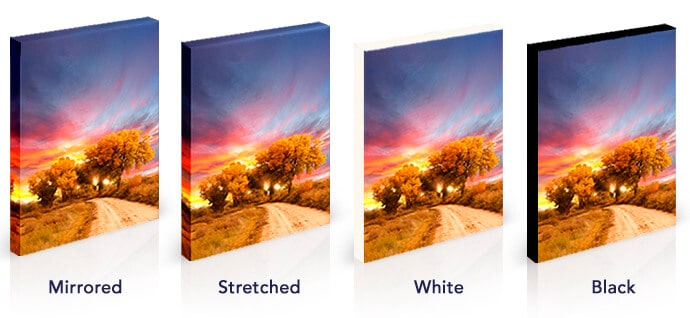
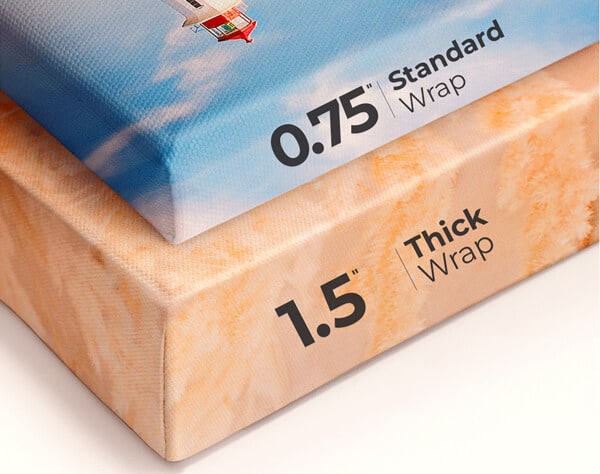
Should I release Editions?
Edition planning is an essential part of the release of new art. You should to decide in advance the edition format to release prints, its a poor marketing practice to change your edition structure after selling some prints and may cause customer concerns.
Open Edition Prints
Offering open edition (OE) prints is a great way to provide a cost-effective option for beginning art lovers, making your work accessible to a broader audience. OE quantity is “unlimited”, you can print as many as you can sell. These are great for website ecommerce, pop-up festivals, social media shoppers and other affordable or discretionary-purchase channels.
Limited Edition Prints
Create exclusivity and scarcity with limited editions, driving up demand and value for your work among collectors. Limited editions appeal to more serious collectors, often reached through wholesale partners with trained sales staff (art galleries and high end retail stores). There are two popular types of limited edition prints in Hawaii:
- SN (Signed and Numbered) - These are standard giclée prints that are signed and numbered by the artist. Common sizes for Signed & Numbered editions range from 50-250.
- AP (Artist Proofs) - Artist Proofs offer even more exclusivity for collectors. In addition to being Signed & Numbered by the artist, an AP is usually "hand-embellished" (highlighted) - making it even more like an original painting. The number of Artist Proofs offered is low, often only 10% of the SN edition size. For example, an edition with 100 Signed & Numbered prints may only offer an additional 10 Artist Proofs.
Other editions exist but are less commonly used. A “Unique Edition” is an edition of one copy of a giclée print where each "unique" has heavy embellishment or highlighting or screening that is different from other uniques of the same image. And "Printers Proofs" are first-run prints often used for color correction work between the artist and print shop to dial in the final color (not popular these days due to the high accuracy and consistency of giclée inkjet prints).
In Hawaii, artists are legally required to provide Certificates of Authenticity with the sale of any limited edition prints (other state laws may vary). This document ensures the value of the print with the artist signature, and must include certain facts such as the artist name, year, date, and more. For Hawaii artists, the State of Hawaii has a Revised Statute 194 governing certificates.
How Do I Choose an Edition Size?
Limited edition giclée's have smaller editions than traditional offset lithography print runs (of hundreds or even thousands). A digital fine art print edition will usually range 50-250 prints in Hawaii, and the number of sizes with an edition will usually be around three. Digital fine art prints are to be looked at as an extension of an artist’s original artwork (or are actually photographer’s "originals"). It is important to have a solid strategy for edition print sizes and quantities, based strongly on market research.
As a general rule of thumb, higher quantities allow for more sales (if the artist name is strong and demand exists), while lower quantities indicate more exclusivity and may allow an edition to “sell out”, which is a desirable marketing goal to support value and reputation.
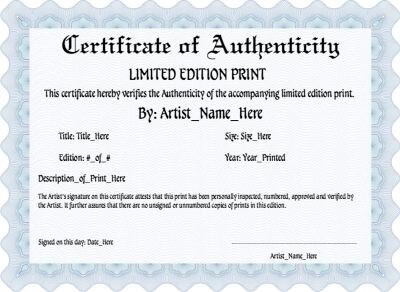
How do I price my canvas giclée's?
Pricing canvas giclée prints involves a careful consideration of several factors to ensure that the artist covers costs, aligns with the market, and ultimately achieves a profitable and sustainable business model.
- Cost of production
- Edition size
- Market research
- Artist reputation
- Print size and complexity
- Additional features (ex: hand embellishing)
- Profit margin
- Gallery and 3rd-party fees
- Shipping & handling
Navigating the world of art sales can be as creative as the process of making art itself, especially when it comes to pricing canvas giclée prints. Artists have at their disposal several strategies to ensure their pricing not only reflects the value of their work and production costs, but also aligns with the market and their personal brand. Let's dive into some of the most popular strategies:
- Cost-Plus Method: Start by calculating the total cost of creating your giclée print, including materials, printing, and any finishing processes. Then, add a markup to ensure a profit. This method guarantees that all production expenses are covered, allowing artists to earn a fair return for their creativity and hard work. It's straightforward and ensures financial sustainability.
- Price Per Square Inch: This approach involves setting a price for each square inch of the print, then multiplying that by the total size of the artwork. It's a transparent method that easily adjusts for prints of different sizes and helps maintain consistency across your portfolio. Pricing can vary depending on the artist's reputation, the quality of the print, edition specifications, and the artwork's complexity.
- Market Comparison Rates: Research the pricing of similar artworks in the market to determine a competitive yet fair price point for your prints. This strategy helps artists understand their position in the market and adjust your prices to align with industry standards and customer expectations. It's crucial to consider factors such as your experience, the artwork's uniqueness, and the print's quality and size.
Additionally, an advanced strategy of implementing escalated pricing based on the remaining availability of limited edition prints can add an exclusive allure to your artwork. As the availability decreases, the price increases, reflecting the growing scarcity and desirability of the print. This strategy encourages early purchases and rewards collectors for investing in your work sooner rather than later.
By thoughtfully considering these pricing strategies, artists can confidently price their canvas giclée prints in a way that honors the value of their art, meets market expectations, and supports their artistic journey. When pricing canvas giclée prints, artists should aim for a balance that reflects the value of their work, covers all costs, and remains attractive to potential buyers. It's also important for artists to be flexible and willing to adjust prices based on feedback, sales performance, and changes in their market position.
Grow your art business with canvas giclée prints
Growing a fine art business requires a combination of strategic planning, marketing, product development, networking, and continuous creative development.
- Develop a Strong Online Presence: maintain a professional website showcasing your work, artist statement, biography, and contact information. Utilize social media to share artwork, process videos, and also “behind-the-scenes” content.
- Leverage Online Sales Platforms: Etsy, Saatchi Art, and Artsy provide artists with opportunities to sell their work to a global audience.
- Exhibit in Galleries and Art Shows: Participating in gallery exhibitions, art fairs, and local art shows to significantly increase visibility - sell your work, meet collectors, and network with other professionals.
- Offer Limited Edition Prints: make art more accessible to a broader audience and provide a steady income stream. High-quality prints, especially when signed and numbered, can add a collectible aspect to an artist's work.
- Engage in Networking and Collaboration: relationships with other artists, galleries, and influencers in the art world will open up new opportunities for exhibitions, collaborations, and sales. Networking can be done through social media, art events, and by joining art associations or groups.
- Collect Email Subscribers: Building an email list allows artists to directly communicate with their audience, share updates about new work, exhibitions, and offer exclusive deals.
- Create a Blog or Vlog: Sharing insights about the creative process, techniques, and the stories behind artworks can help artists connect with their audience on a deeper level. Content marketing through blogs or video logs (vlogs) can also improve an artist's search engine visibility and attract new followers.
Learn more!
Want to learn more about canvas giclée's and other prints? Stop by our office to talk, we’re happy to share our knowledge and ideas!
Our sister brands...
Chromaco is a leading brand of Black Sand Publishing (diversified art business focusing on art licensing and distribution). We also operate 808Arts.com (Hawaii-focused online art marketplace), and Chromaco Ceramics (custom printed ceramic products for construction).
